The wait is over. We are the first to have Samsung Galaxy Fold on our cloud for our users to test their apps. This phone comes with a 7.3-inch Dynamic AMOLED primary display with a resolution of 1536×2152 (QXGA+). The cover display is 4.6″ HD+ Super AMOLED with a resolution of 720×1680. You can test your apps on the primary display for now but soon you will be able to use the cover display as well for testing.
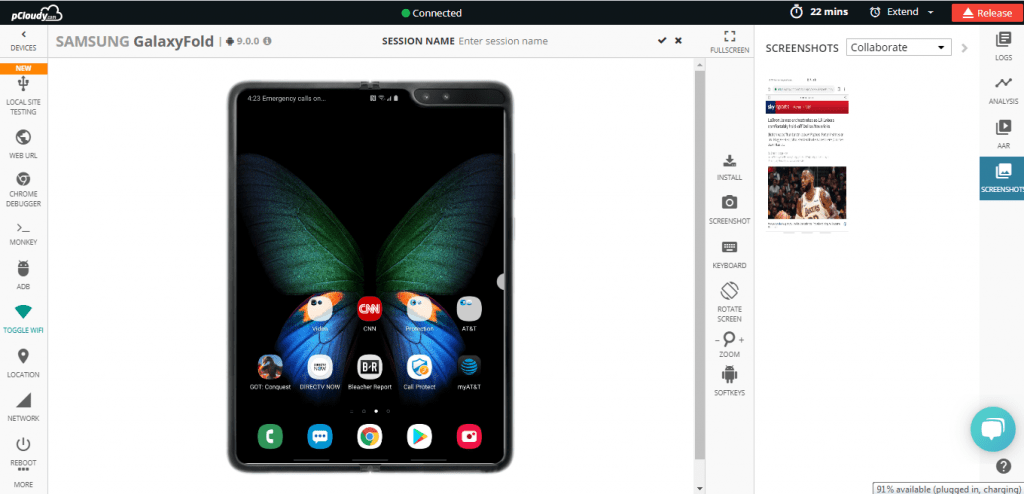
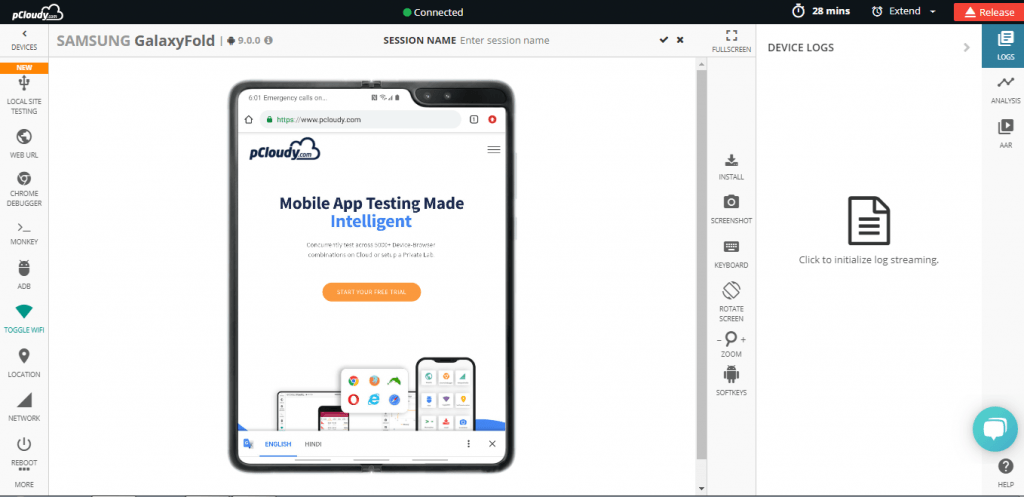
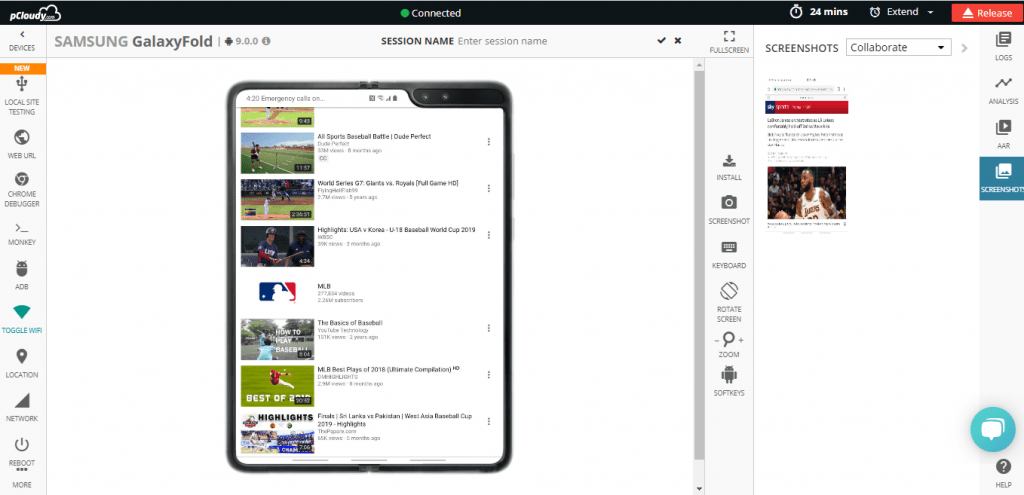
Month: December 2019
Just a few days left for the new year so we thought of recollecting all the major events and achievements of pCloudy in 2019. Before we start we want to thank all of you for the constant support and faith in us that gives us the confidence to reach new heights. With that said, here is a quick recap of 2019.
Achievements and Recognitions
1. Users
As we grow in popularity, we have witnessed tremendous growth in the user base and we are forging ahead towards the 100K user milestone. The total device hours utilized by our clients also crossed the 1 Million mark. There are many factors behind this growth like a quality product, 24/7 support, competitive pricing, etc.
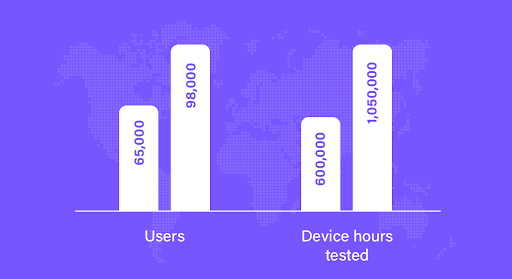
With more than 25K social media followers, we have built an evergrowing pCloudy community that helps us enrich our product and provide better services. We provide solutions to 20+ global giants with device labs located at 3 different strategic locations around the world.
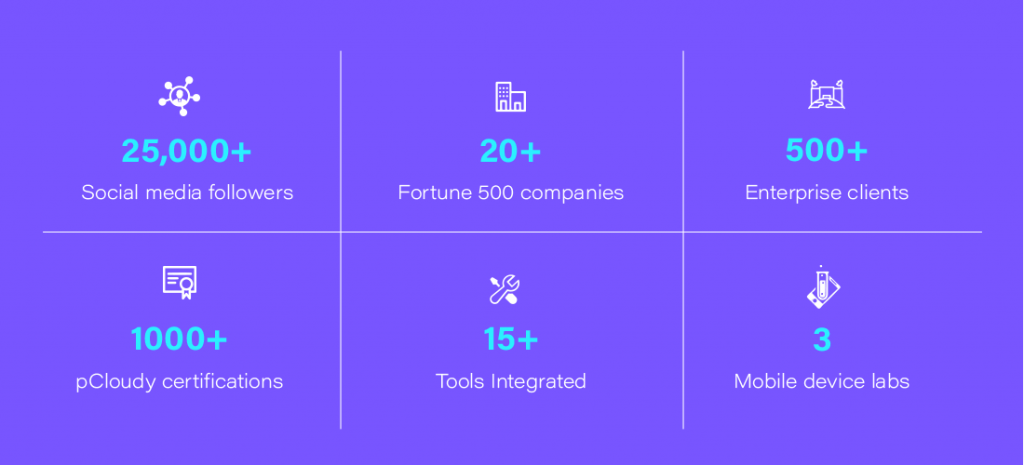
pCloudy is integrated into more than 15 tools and frameworks that enhance the testing experience. pCloudy’s manual and automation certification is also gaining popularity as it helps users to understand the product and perform testing effortlessly.
2. Recognitions
G2 Crowd has recognized pCloudy as a high performer in mobile app testing and test automation in 2019. There are many quality standards that need to be met to get into the high performer category. pCloudy was acknowledged as a high performer due to the trust and rapport we maintain with our clients.

3. Clients and Partners
This year was really prosperous for us as we added many big names in our clientele like Conduent, Sapient, Swiggy, Migo, to name a few. Apart from that we also partnered with Global giants like Hexaware, HCL, Quality Arc, UST Global, and many more.
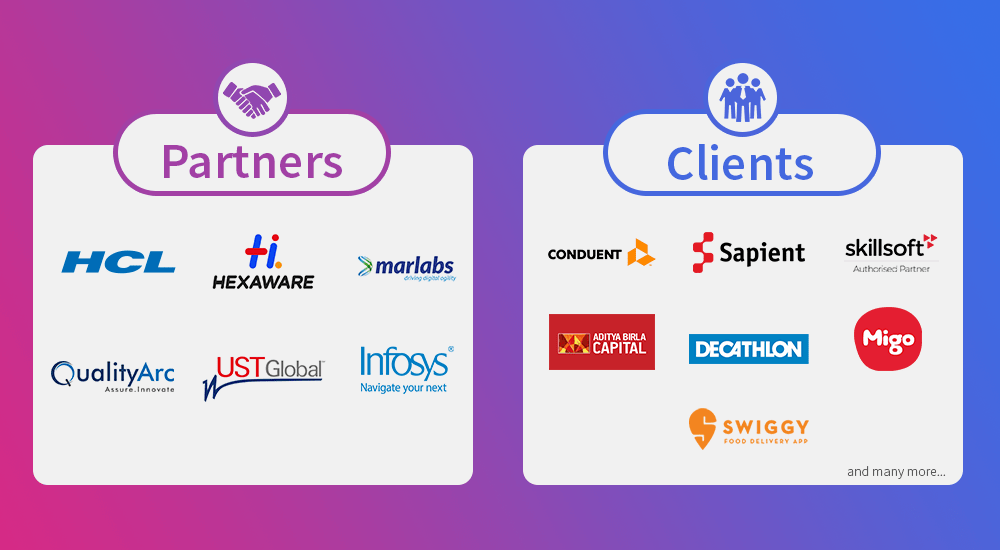
Product Enhancements
Our focus is on constantly upgrading our product and introduce new features to make mobile app testing much faster and easier. Here is a list of some of our key product updates.
•Android 10 before competitors: We were the first to provide devices loaded with Android 10 for testing on the cloud.
•iPhone 11 and iOS 13 before competitors: We also surprised our users by being the first to bring the iPhone 11 with iOS 13 on the cloud to test their apps.
•Faster Appium test execution: We further increased the efficiency of the Appium tests by reducing the execution time.
•Espresso through Orchestrator with Live view: Now Espresso is available through Google’s latest Test Orchestrator which lets you use the full power of Espresso and run more modular and stable tests. Live View now is supported by Espresso also.
•Audio Interaction testing: pCloudy is the first to introduce this unique feature that enables users to test their app using the Audio in/out function in the devices. This is a big development and it will help in testing voice-enabled apps.
• Admin Module: Now there is a multilevel user administration system where a system admin can create a team and a team admin. The system admin has more authority than a team admin and it can distribute the testing minutes among the team members.
•Video-based navigation for iOS: Now you can see actual device video on iOS devices which gives you much better performance for high-resolution iOS devices that last year.
Events
As always we were the show stopper at many events this year. We got good exposure and the crowd welcomed us with curious eyes. People came up with their queries and were eager to know more about the product.
Appium conference: We got good brand exposure as we were the platinum sponsor of the Appium conference 2019. We used this opportunity to grow our network among industry leaders and we also got some new clients at the conference. pCloudy’s booth was the crowd-puller and the keynote by Avinash was well received.
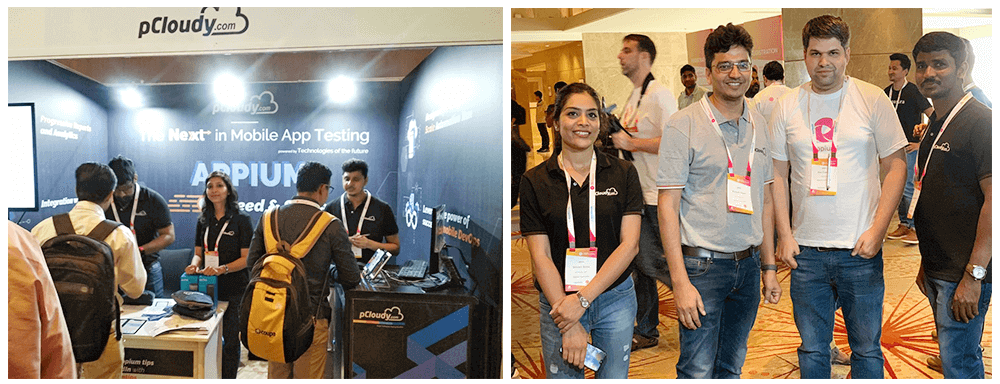
pSTC: The Pune Software Testing Conference organized by STePIN-Forum was another great event for us. We were the Exibhitor Sponsor of the conference and we used this platform to connect with the software executives from around the globe.
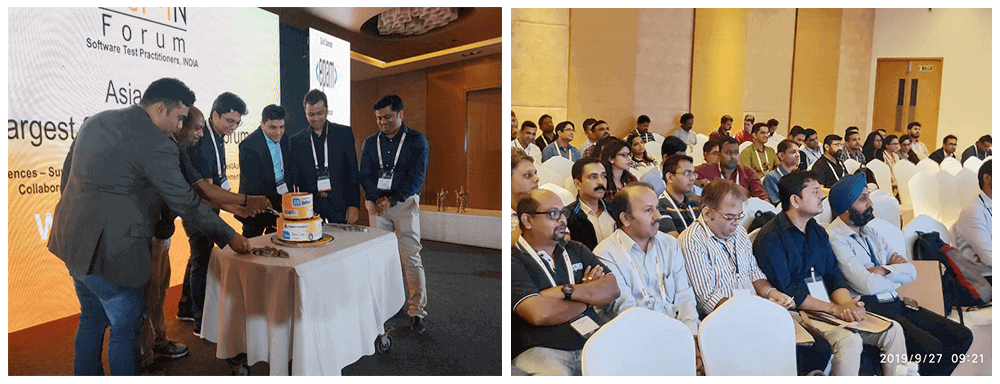
D3: Organized by USTGlobal, one of our most valued partners, the D3 DevCon was a huge success for pCloudy and people showed great interest in our product.

QAI STC: Being the Title Sponsor of the conference, we proved to be the cynosure of all eyes. The conference started with the keynote by Avinash on the future of testing. We got a chance to meet the testing experts from around the world and get familiar with their views on app testing trends.
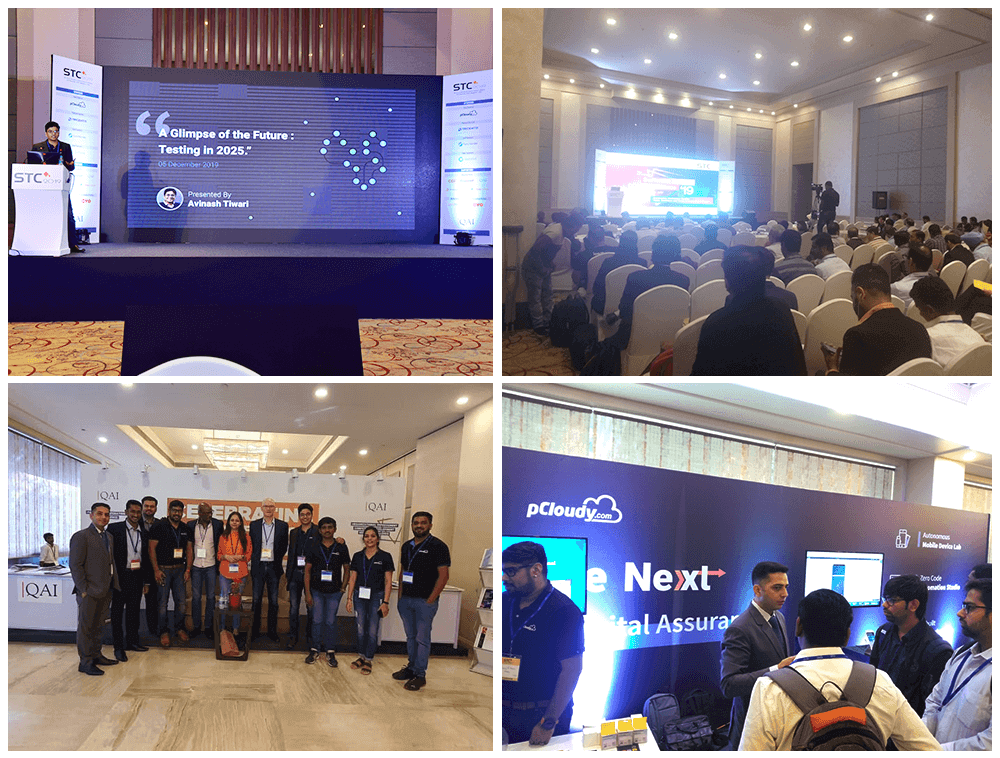
Competitions and Celebrations
There is a saying, “work like a captain and party like a pirate”. pCloudians work hard to exceed our customer’s expectations and pCloudy makes sure that pCloudians celebrate their achievements. We are proud of our achievements even this year but will strive to have more exciting starts and remarkable successes in 2020. We will continue to improve our products and make your experience with pCloudy a remarkable one.
Hackathons: We organized two in-house hackathons this year where our teams got a chance to work together to solve a problem and show their competitive spirit. It was undoubtedly a unique and exciting experience for the teams.
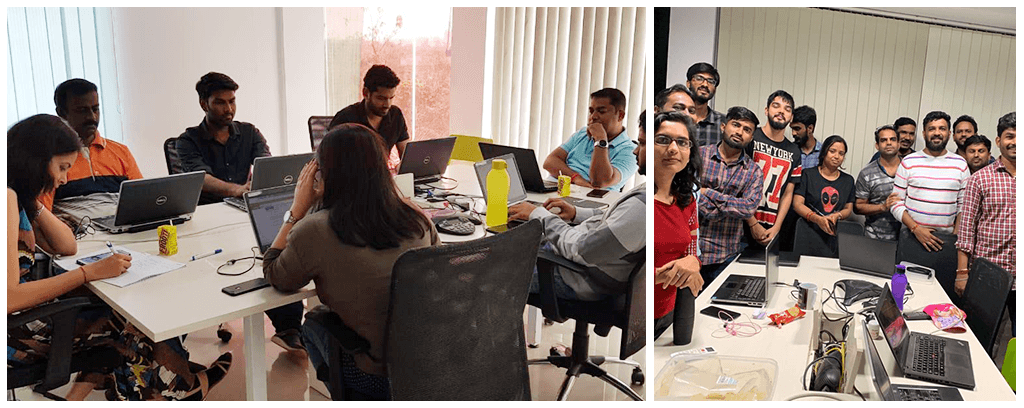
CSR: This year at pCloudy we hosted children from Lakshya Udaan Home – an orphanage located in Bangalore as a part of our social initiative. It was a delightful experience as the kids drew their favorite superheroes, enjoyed the snacks and watched cartoon movies.

Sports and Games: There is a famous quote by Jim Rohn that says, “Take care of your body, It’s the only place you have to live.” We know that sports and games are the best way to keep the body and mind fit. This is why we at pCloudy participate in sports events like marathons and cricket tournaments. We also organized a games carnival at pCloudy and it was a big hit.

Festivities: While we work hard to meet our deadlines and deliver quality services, we also celebrate all the festivities and achievements in a grand style. We had team outings, pot luck, and other celebrations that strengthen the comradery among the team.
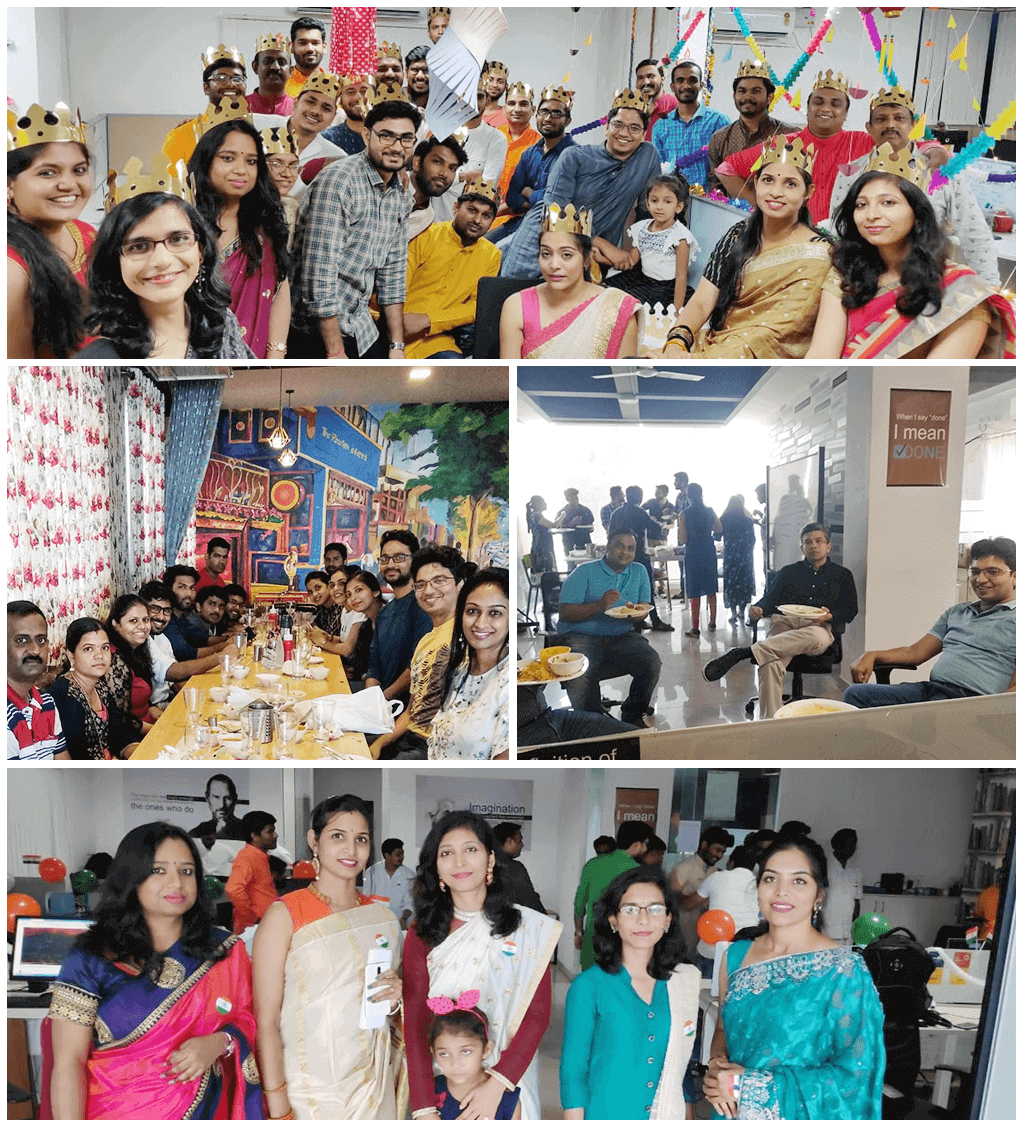
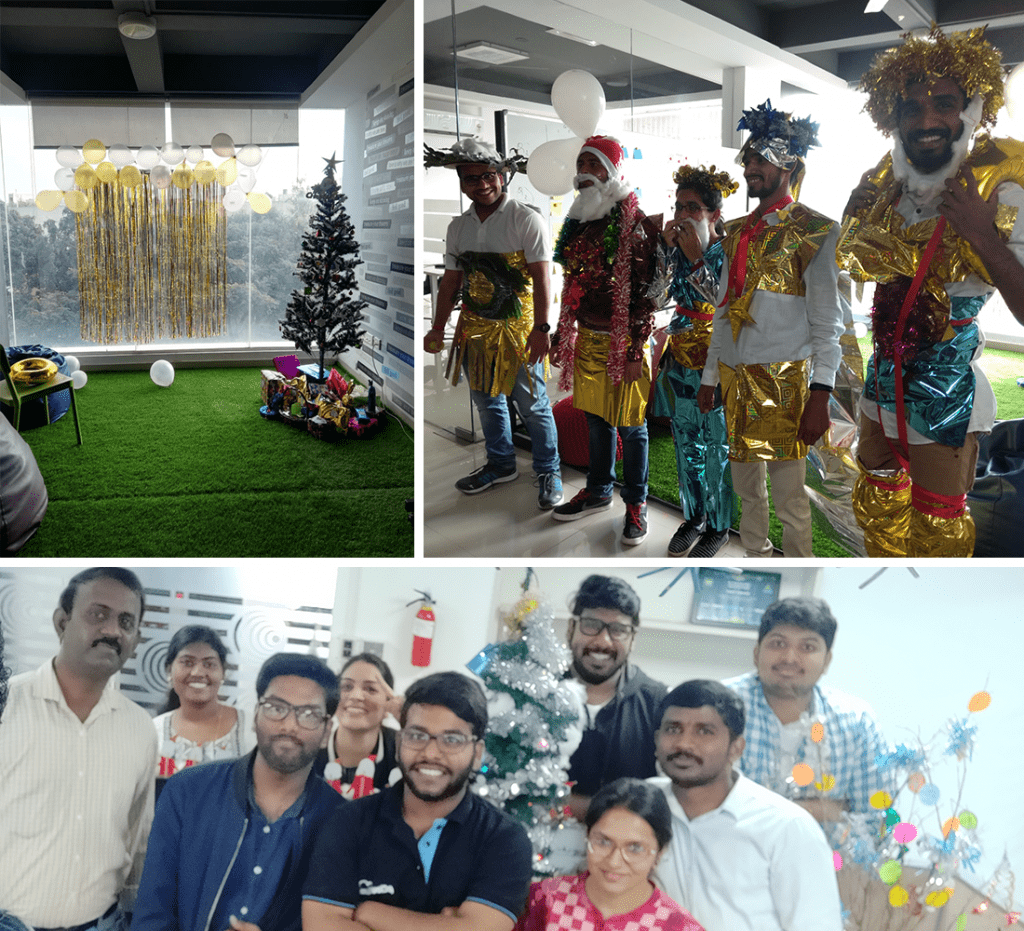
These are some of the highlights of the year 2019 at pCloudy. This year was full of achievements and celebrations as we reached many milestones in our journey. We hope that the next year will be as exciting as this one and we will observe the attainment of corporate aims.
Lastly, we wish you good health, happiness, and success. Wishing you a wonderful year ahead!

Qualcomm launched it’s flagship SoC Snapdragon 865 5G mobile platform, but without an integrated modem. The reason why Qualcomm is not selling the 865 with an integrated LTE modem, might be because OEMs are not interested in splitting their high-end products into LTE and 5G segments. With this new launch, it looks like Qualcomm is really pushing OEMs to launch 5G equipped high-end device in 2020. On the other hand, AT&T, Verizon and other carriers around the world have been spending a great deal of money on 5G deployments.
Snapdragon 865 and X55
Snapdragon 865 is a dual-chip system, but according to Qualcomm, it won’t impact power consumption. The 5G modem is not integrated into the chip due to the complexities of supporting different types of 5G networks. Although in Snapdragon 765, the X52 modem is integrated, it sports lower download and upload speed.
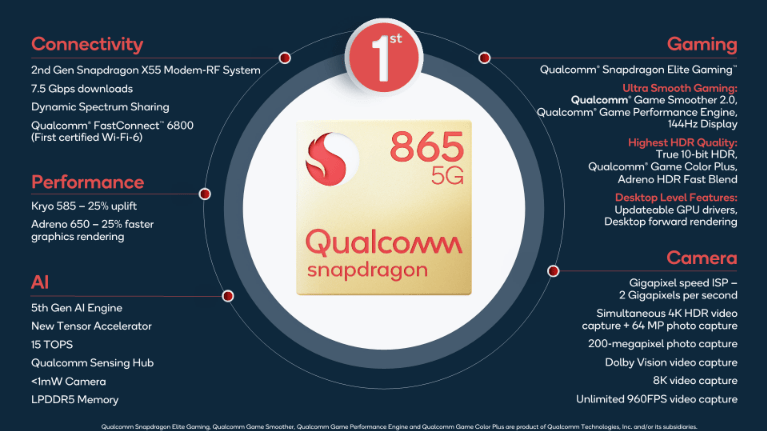
Some users have complained about the power consumption and heat are issues in the devices loaded with Snapdragon 765. To rectify this, further improvements to packaging, node shrinks, antenna placement, device panel power consumption, and SoC interconnects might be needed to bring device battery life back up to the consumer’s expectations.
There have been some negative speculations about the latest 5G mobile platform, but I think that the Snapdragon 865 will be an improvement for the 5G devices to be launched in 2020. OEMs are eager to sell 5G but they don’t want the user experience to be compromised for the new feature. The negatives of using an off-die modem can be balanced by improvements in other metrics.
Rapid 5G Deployment
The 5th generation of cellular technology promises to improve the coverage, speed, and responsiveness of wireless networks. Users have indicated constant speed around 1 Gbps, often touching 1.4 Gbps. That’s 10 to 100 times faster than 4G connection and even faster than a fiber-optic connection. This means you will be able to download a season of Brooklyn-nine-nine in a few seconds.
In the US, T mobile and AT&T are leading the way to deploy 5G in all the major cities. Sprint and Verizon are not far behind. But to get widespread coverage of 5G network we might have to wait till the later months of 2020.
Apple A13 Vs Snapdragon 865
The snapdragon flagship 865 has a 5th generation Qualcomm AI Engine is 2x more powerful than its predecessor and an all-new Hexagon Tensor Accelerator. The Kyro CPU provides a 25% faster performance. But is it better than Apple A13?
It is a common conception that Apple’s processors are two generations ahead of the Android processors. There are many processors in the 5G race like Kirin 990, Exynos 990, and Dimensity 1000 5G, but there is always a comparison between Snapdragon and Apple processors. In the speed test done by Android authority, it was found that A13 is 25% faster than SD 855 but it didn’t stand a chance in front of SD 865.
In the speed test, the Snapdragon 855-based Galaxy Note 10+ completed the CPU section of the test in 45.3 seconds, the iPhone 11 Pro Max finished it in 40.0 seconds and the 865 completes the same test in 36.6 seconds. So Snapdragon 865 is 8% faster than the iPhone 11.
Apple A13 still has the upper hand in terms of GPU performance. It took 16.9 seconds for the Qualcomm Reference Device to finish the 3D Unity test but the iPhone 11 Pro Max finished it in 14.5 seconds.
AnTuTu and Geekbench also have similar performance reviews. The scores show that A13 and 865 are neck to neck when it comes to overall performance.
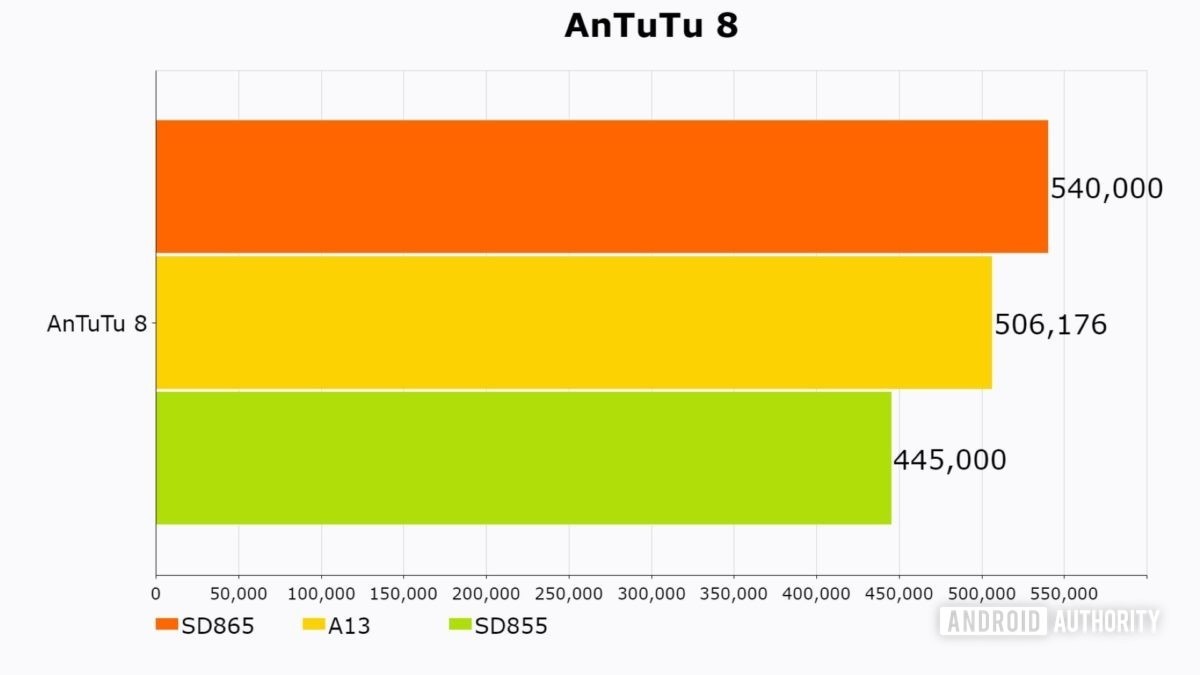
The Road Ahead
In countries like the UK and South Korea, things are catching up fast. China too announced that it will roll out 5G network in all the major cities in 2020. The only thing that will hinder the deployment of 5G in the rest of the world including the developing countries is the cost.
The chipsets launched by Snapdragon and other companies are costly which adds up to the cost of the devices. So, for now, the 5G network will be made available on high-end devices like Samsung Galaxy S10, iPhone 12, Oneplus 7 Pro, etc. Looking at the speed of 5G deployment in the US, we are sure that the majority of the urban population will be able to use 5G services early in 2020. We can also expect new 5G enabled SoC launches with better specifications early next year.
Asia’s leading software testing conference, QAI STC 2019 concluded on December 6th, 2019. The theme of this year’s STC was architecting continuous quality: think, transform, and thrive in an Intelligent future. The STC is a platform for experts to display ideas, experiments, and experiences to explore challenges and suggest techniques and innovations to overcome common problems.
Avinash’s keynote focused on the future of testing which was lauded by the top minds and became the highlight of the event.
pCloudy was the title sponsor for the event and so we got a bigger platform to showcase our contribution in shaping the future of mobile app testing.
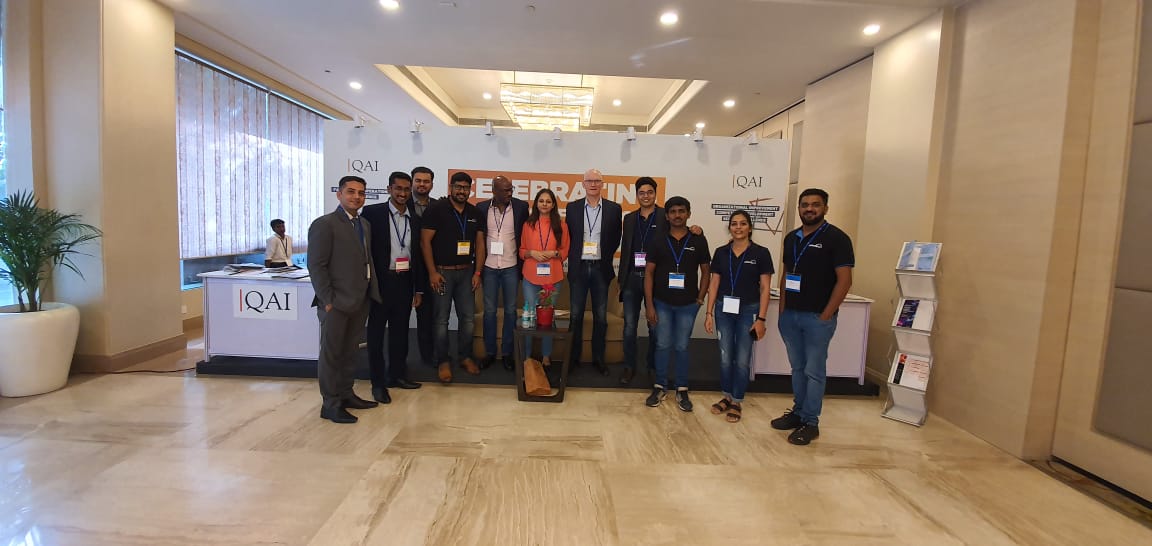
More than 500 experts from around 130 software companies gathered to learn new trends in testing, share their ideas and grow their network. There were 14 keynotes from the industry leaders and 50 professionals got a chance to take the stage and share their views about the emerging technologies.
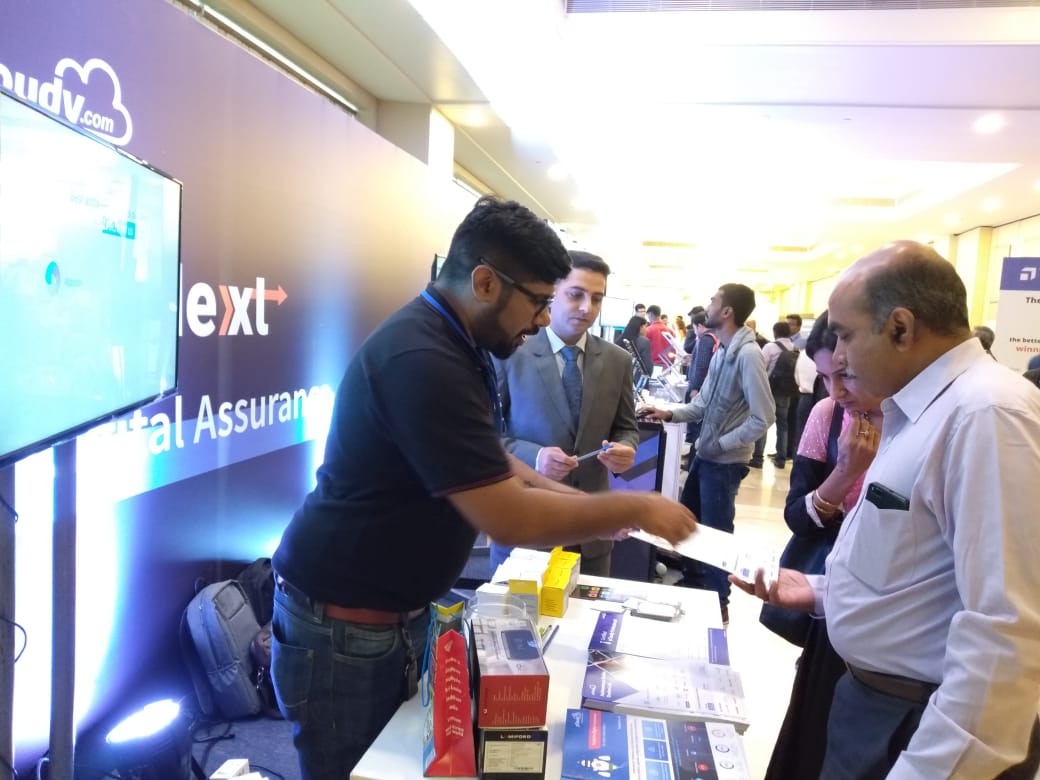
Let’s have a look at the major learnings from this event.
Future of Testing
The STC started with a keynote by Avinash which provided insights about the future of work, applications, and testing. How “We Working” will be the primary organizational model and algorithmic management will take over the middle management to some extent. He also talked about how people will have to constantly upskill to work with the ever-changing technology and the work-life challenges will increase in the future. A digital mesh architecture will allow enterprises to build an agile, flexible, and cloud-ready ecosystem. This will enable real-time connectivity of employees, business processes, business data, and services to help address high volumes of traffic and become cloud-native and mobile-first.
Quality Engineering and Digital Transformation
There was a great emphasis on quality engineering at the STC as most of the organizations are trying to take QE to the next level. Quality engineering focuses on the end-to-end management and the basic principle is the all the teams should bear the responsibility of maintaining the quality in the process. Software QE is the assurance of high standards in the software development life cycle while implementing DevOps and Agile.
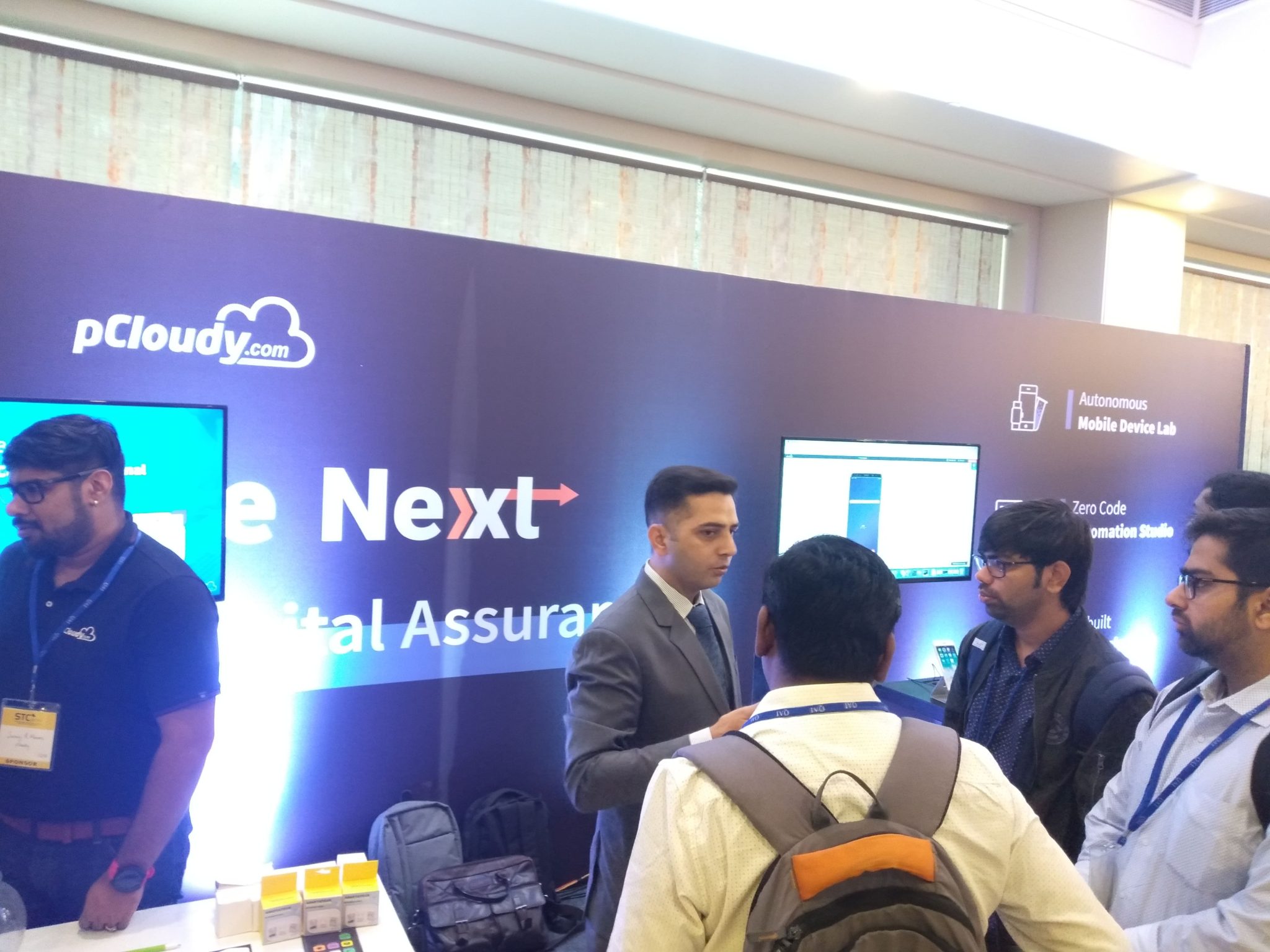
The main role is played by testers who create, implement and maintain systems used to control the quality of production processes. These people need to have a deep understanding of all the technological activities and evaluation principles.
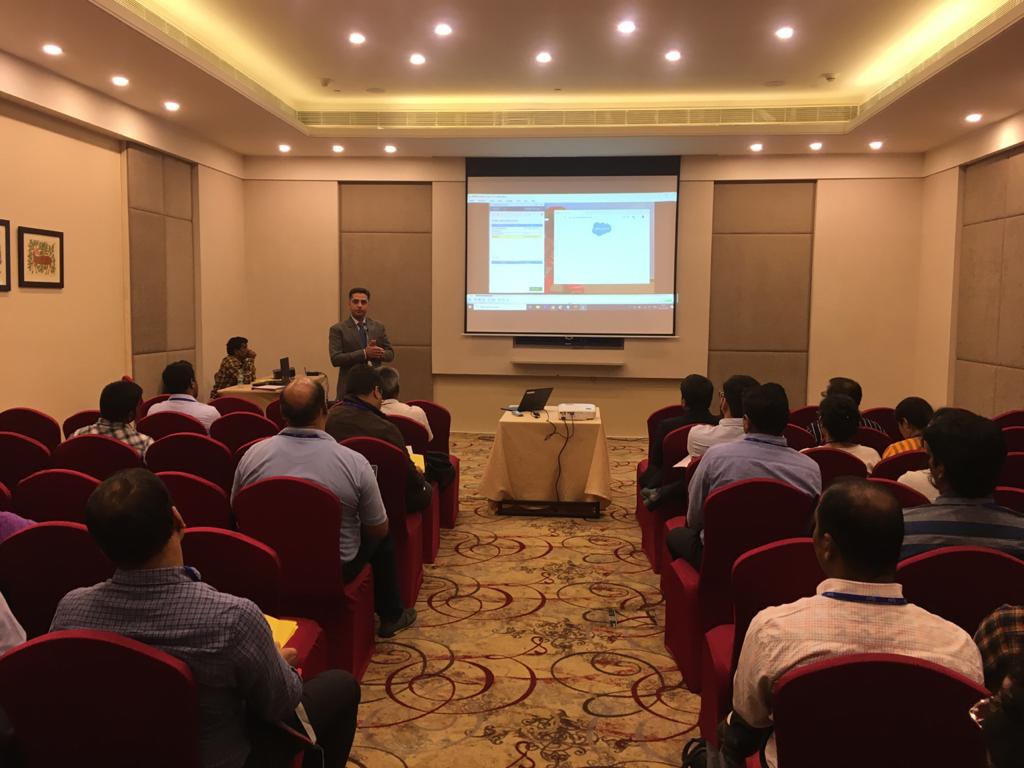
Quality engineering methodology is even bigger in scale than the traditional QA approach and that’s the reason that QEs cannot work in silos. In quality system engineering, people in multiple roles like IT architects, designers, test engineers, project managers, business architects, etc., must cooperate to meet customer expectations. Quality engineering is driven by emerging technologies such as AI and Big Data analytics. Automation is the driving force behind turning the traditional testing into a more effective quality support model.
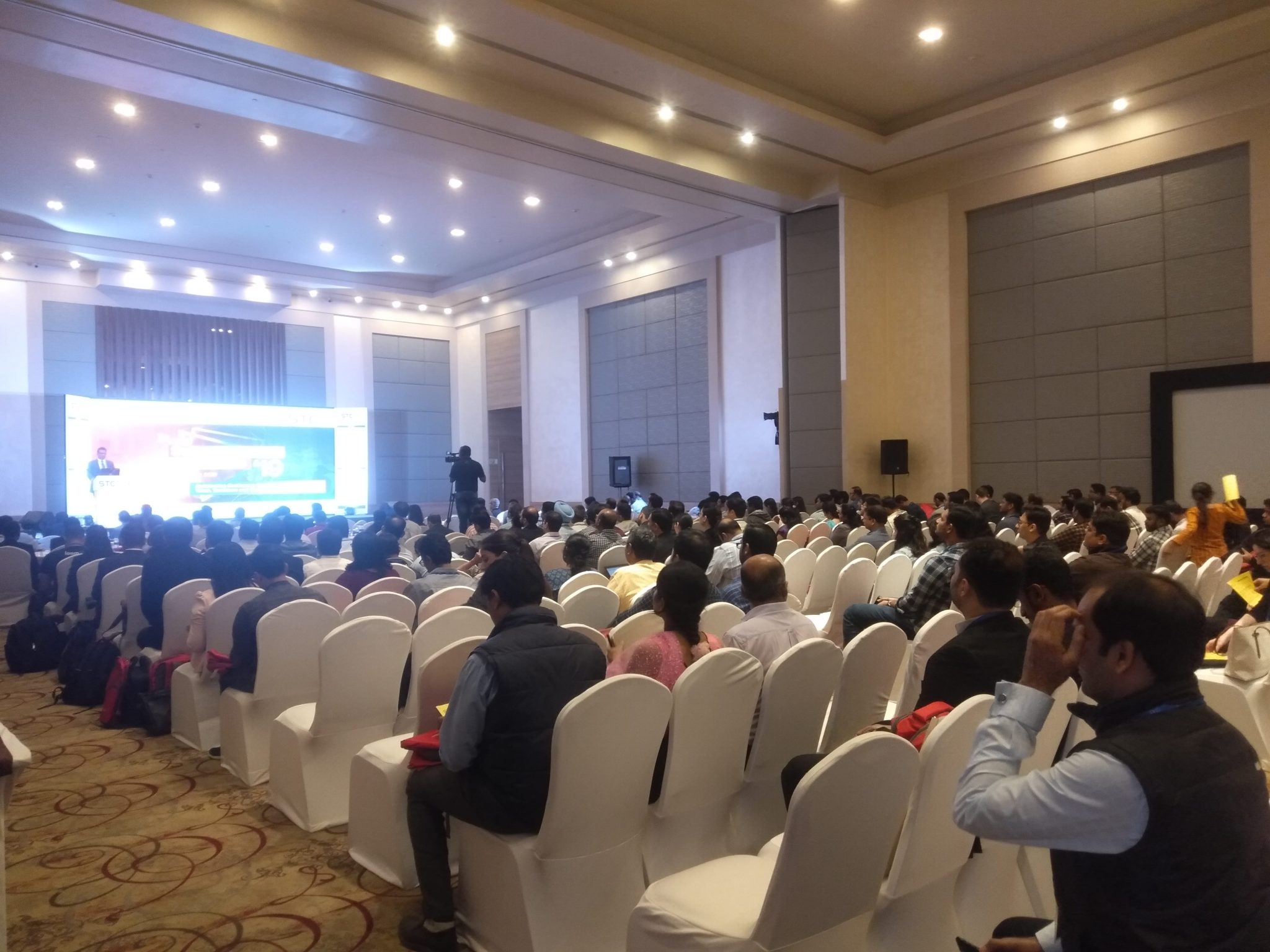
The quality engineering team usually partners along with the business users and the product managers for having a better understanding of the required product details to match up the problems since the starting of the product to the last stage.
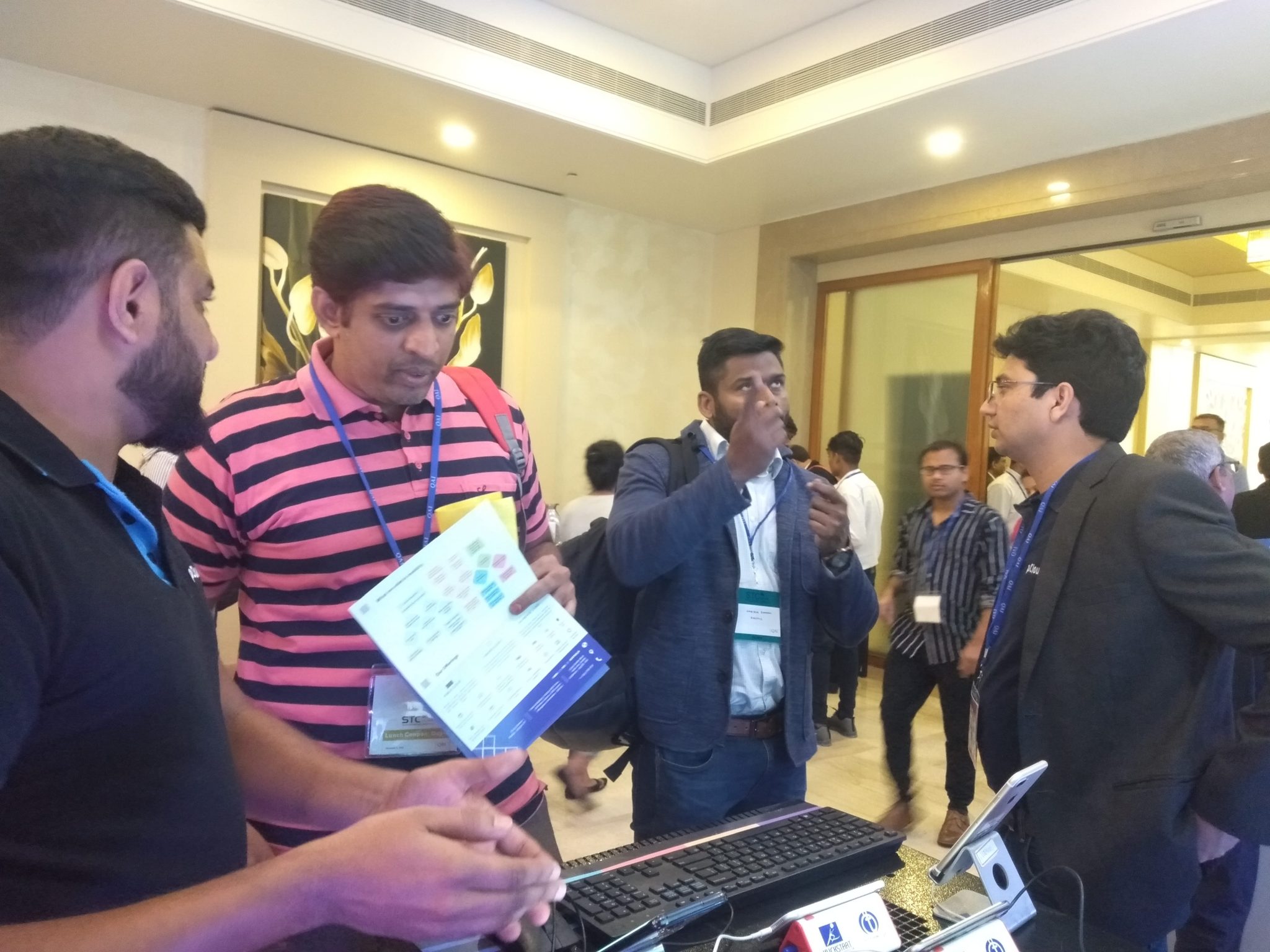
Artificial intelligence, Machine learning, and IoT
The recent development in AI, ML and, IoT were the buzz creators. Experts elaborated on how augmented analytics will be utilized for creating, developing, and consuming analytics by combining these technologies. An augmented analytics engine can identify, filter, and analyze data, and then recommend what needs to be done next without the need of an IT team. These technologies will make data-driven insights accessible to a much larger set of workers.
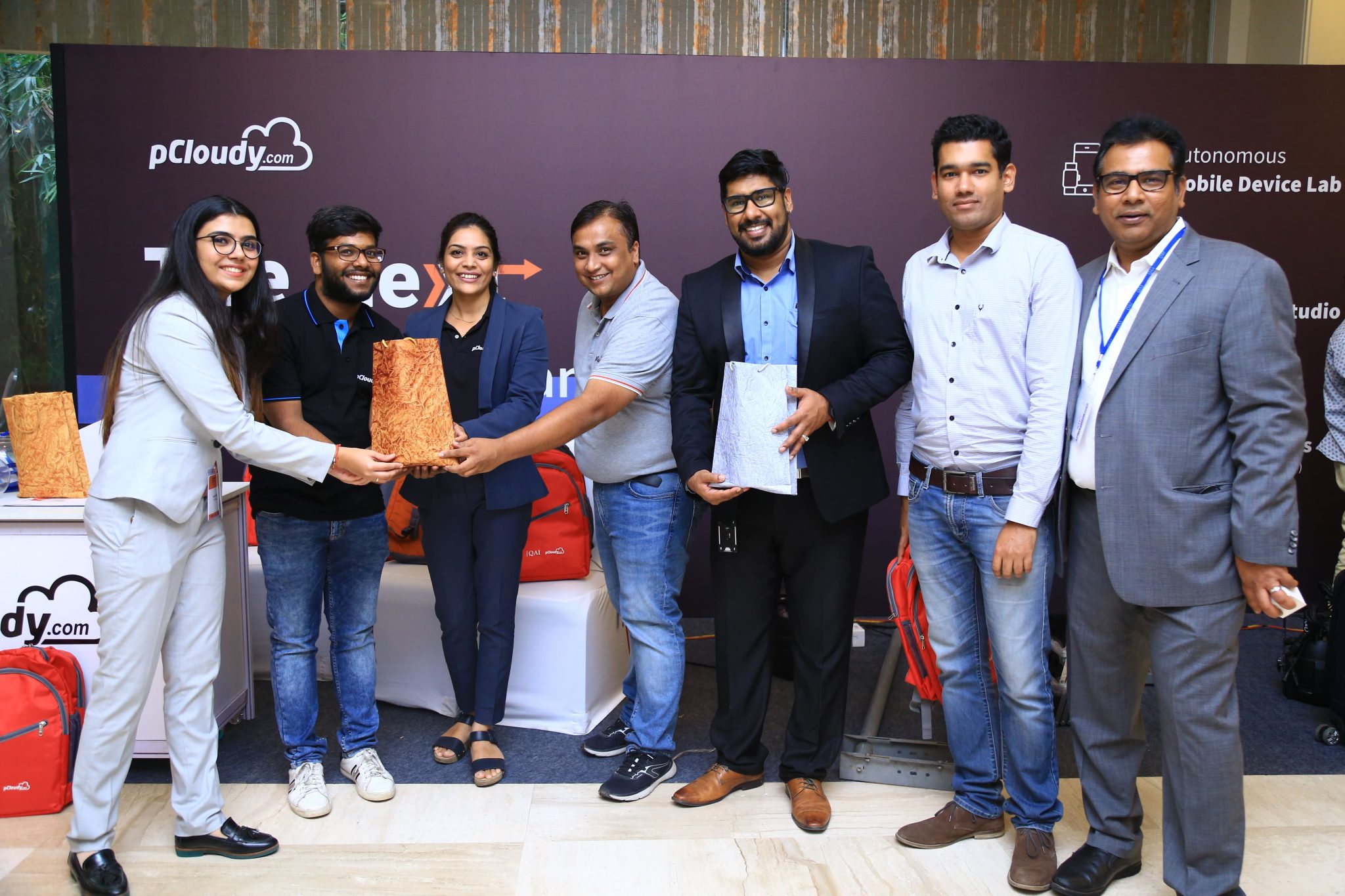
The conference turned out to be really productive with good insights about emerging technologies and tools. It was a great opportunity to connect with software testing experts and professionals from around the globe. To say the least, it was a remarkable event where we got a great response and positive feedback from the crowd.
By concentrating our efforts upon a few major goals, our efficiency soars, our projects are completed, we are going somewhere. This quote by Michael Korda signifies the importance of organizing our efforts to gain better efficiency at work. In mobile app testing, efficiency can be achieved by using a multifunctional tool like Jira and pCloudy. pCloudy is integrated with the Jira bug tracking tool to make it easier for testers to log bugs in Jira from pCloudy. Let’s get an overview of Jira and how it can be used for multiple purposes.
An Overview of Jira Bug Tracking
Jira is an open-source tool used for project management, bug tracking, and issue tracking. Jira has many features and functions that make issue handling easy. Customizable reporting allows you to monitor the progress of your issues with detailed graphs and charts. Jira has four major functionalities, project, issue, component, and workflow.
![]()
A Jira project is a collection of issues and it is identified by a name and a key. The project key is added to each issue associated with the project. Workflow helps in mapping your business process. So now let’s understand how to use the Jira bug tracking tool and its components.
Jira Workflow
Jira has a function called workflow which is used to make a blueprint of the procedure in any organization. The workflow can be customized to suit the project, issue or any subtask. The Jira defect workflow comprises of colored blocks that represent the status of the task and lines that represent transitions.
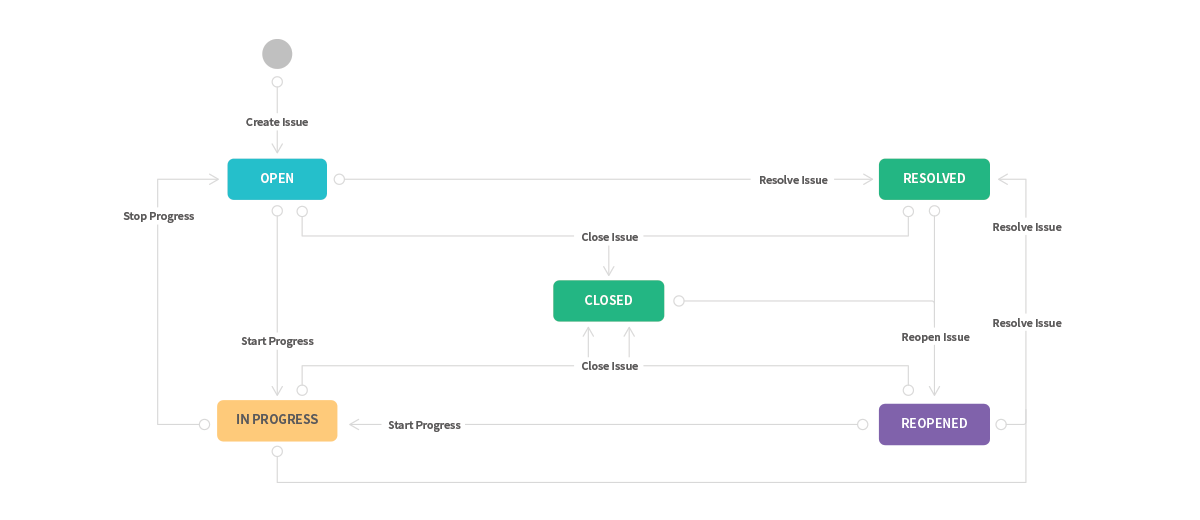
Users can build their own workflows from scratch or download the prebuilt workflows and then customize them. Approval requests can be set for users to make changes in the tasks and task status can be set to change with transitions automatically.
Status shows the position of an issue within a workflow and transitions are the bridges between the status to represent how an issue moves from one status to another. Resolution tells why an issue changed from open to close and condition control who can perform the transition. The assignee commands the responsible member for any particular issue. Validator ensures that the transition can happen given the status of the issue and Jira can recognize some properties on transitions.
Creating an Issue in Jira
An issue is the building block of the project and components are subsections of a project used to group issues in smaller parts in a project. To create an issue you need to click on the plus sign located on the left side of the screen. A new window will pop up where you need to fill in the details about the issue that you are creating.
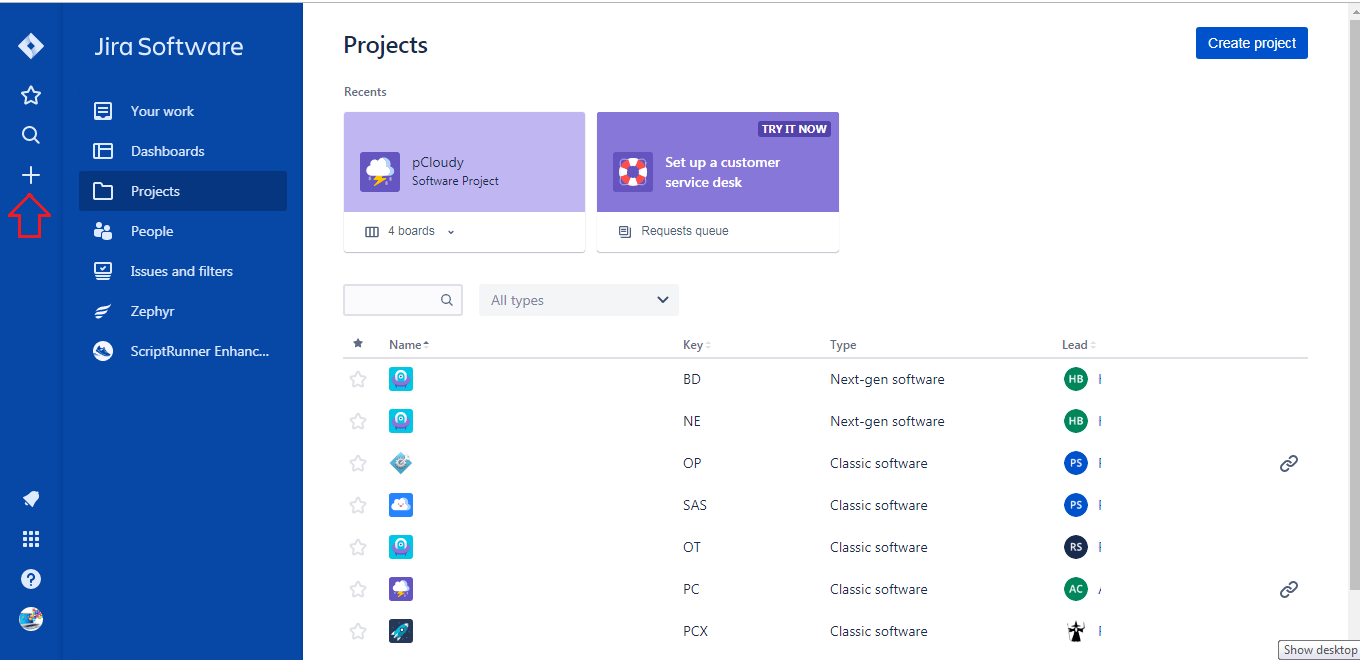
The first step would be to choose the project that the issue is associated with. Just below that is the issue type where you need to select if it is a task, an epic or a story.
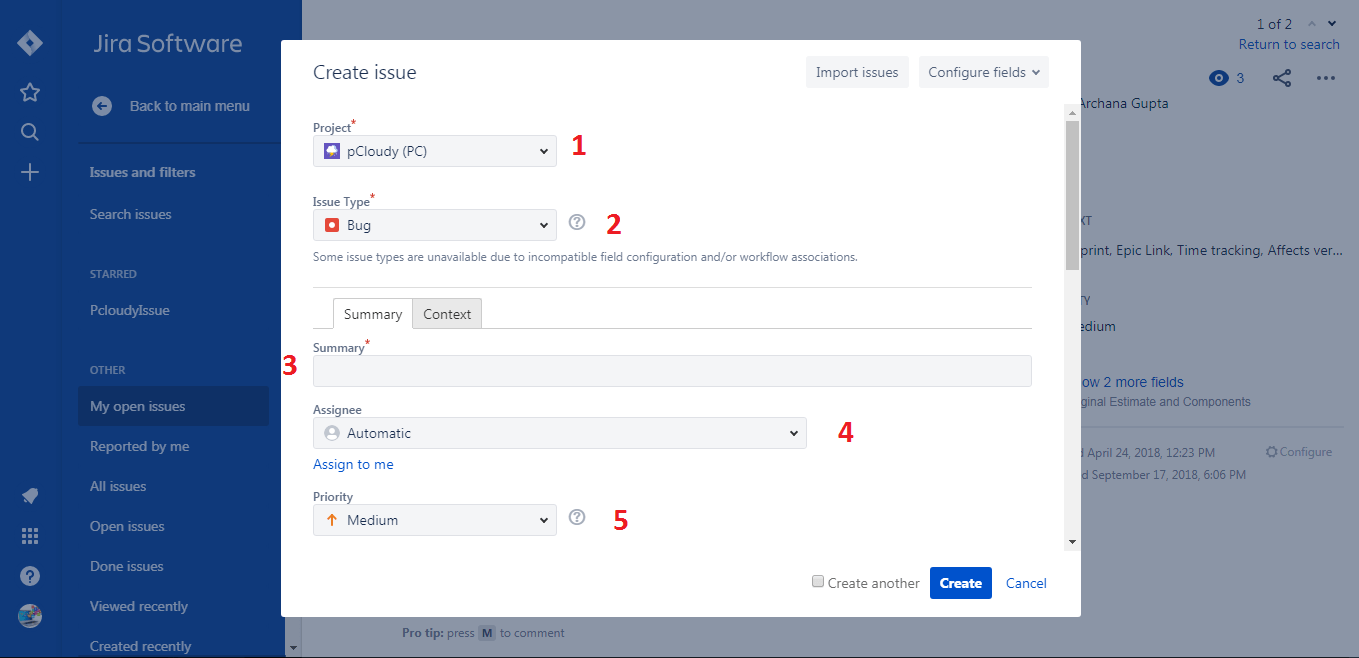
Then add a summary about the issue and assign the issue to your team members. Next, you need to choose the priority and add a label to the issue. Once that is done, You can now add a detailed description of the issue to make sure that you and your team members are on the same page.
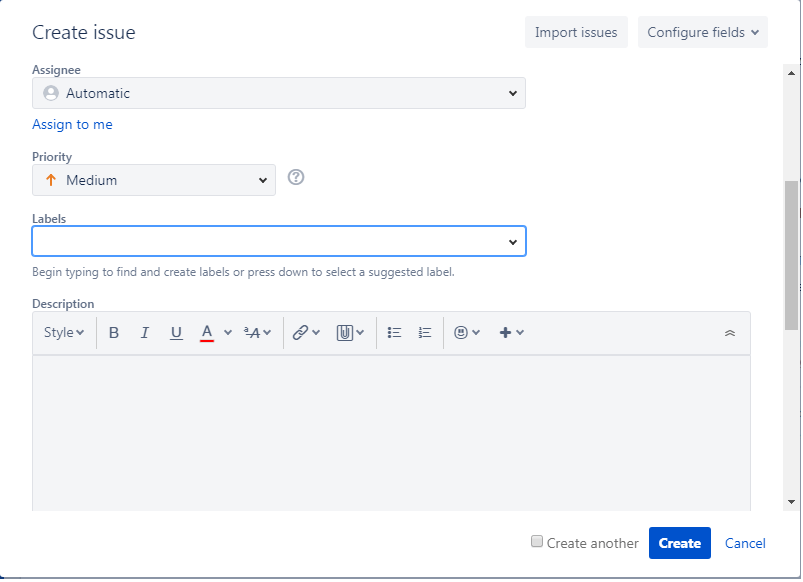
Below the description, you will find Components dropdown and the Environment where you need to fill in the details appropriate for the issue like Hardware specifications, OS, software platform, etc.
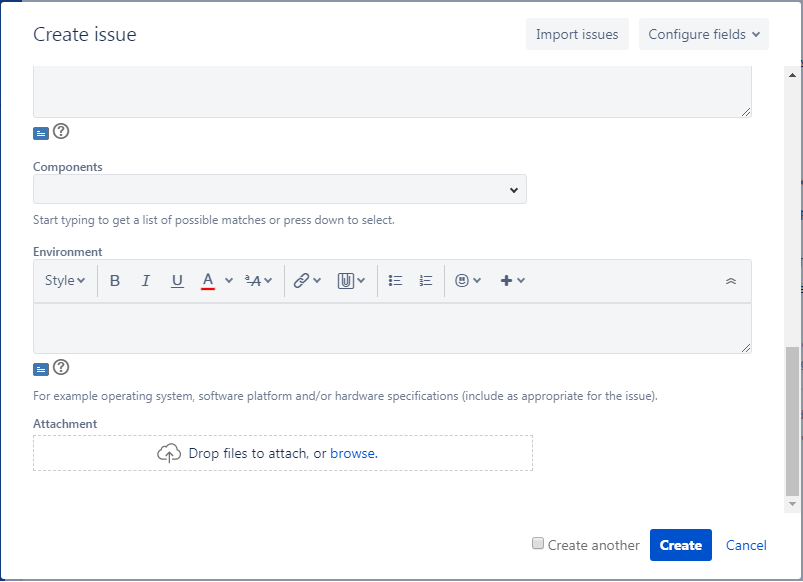
You can also attach files related to that particular issue by clicking on the attachment section and then click on Create to create the issue.
Jira Reports
Jira generates various types of reports on the basis of workflows, issues, task status, and other data fed in by the team. You can track the total work remaining in the burndown chart and manage the progress accordingly. A burnup chart will help in tracking the total scope independently from the total work done. In the sprint report, you get an idea about the tasks that are completed and pushed backed to the backlog in each sprint. Apart from this, there is a cumulative flow diagram, velocity chart, version report, etc.
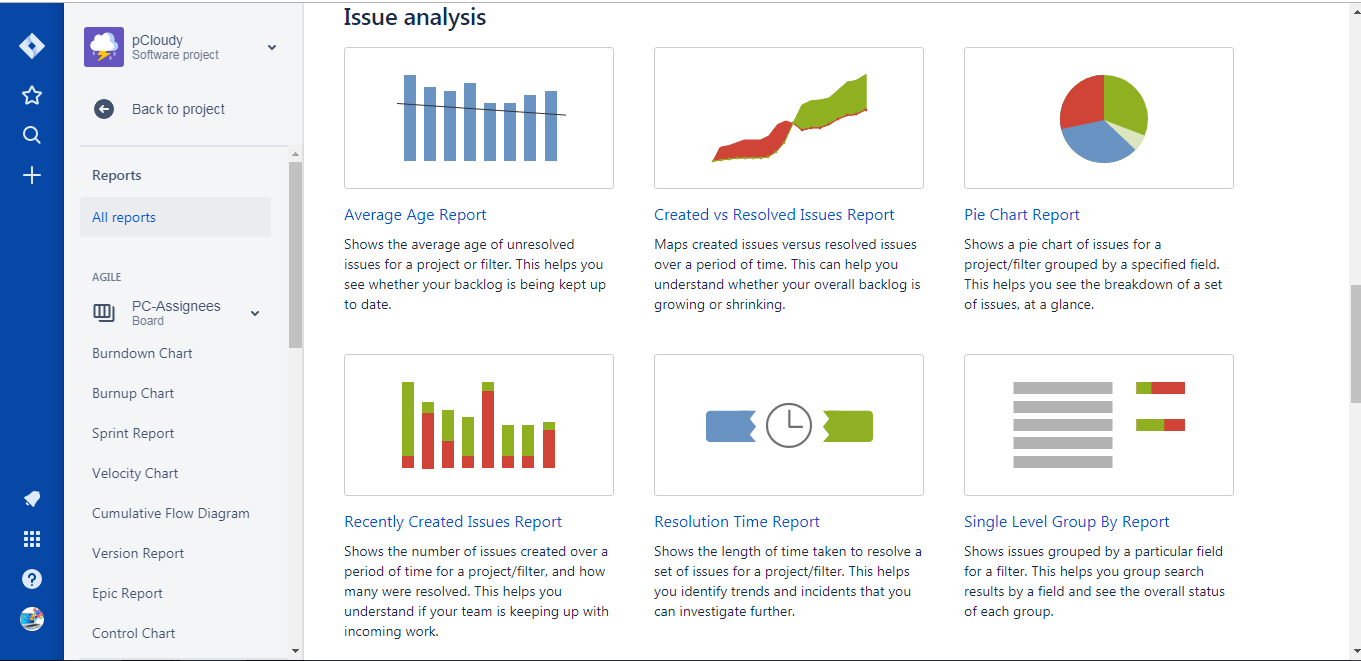
Users will also get an issue analysis report for a better understanding of the resolved and unresolved issues.
pCloudy integrated with Jira Bug Tracking
pCloudy has the option to log bugs, save screenshots and videos of the test actions. But if you want to use the Jira bug tracking system to log bugs then you can to that though pCloudy as well. Just click on the profile ID and the top right corner of the pCloudy screen and select the user setting from the dropdown list.
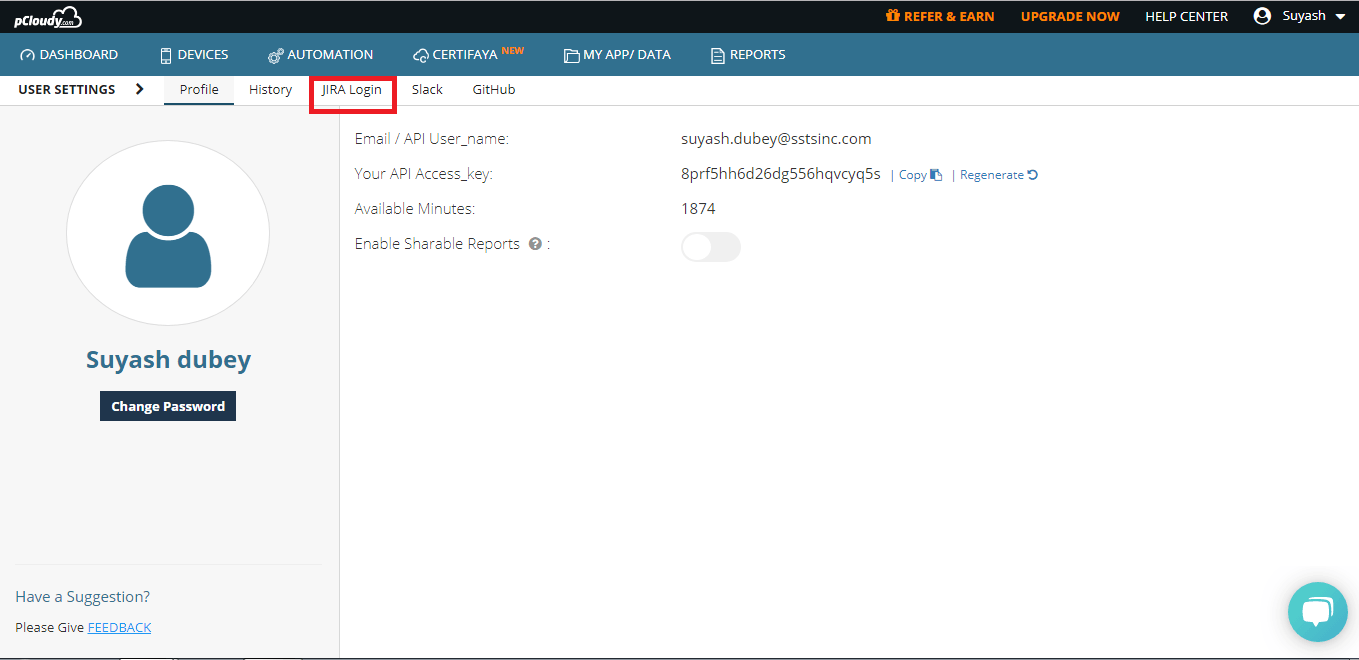
In the user setting page click on the JIRA Logs tab. Enter the URL, Email, API Token and login to log bugs in Jira.
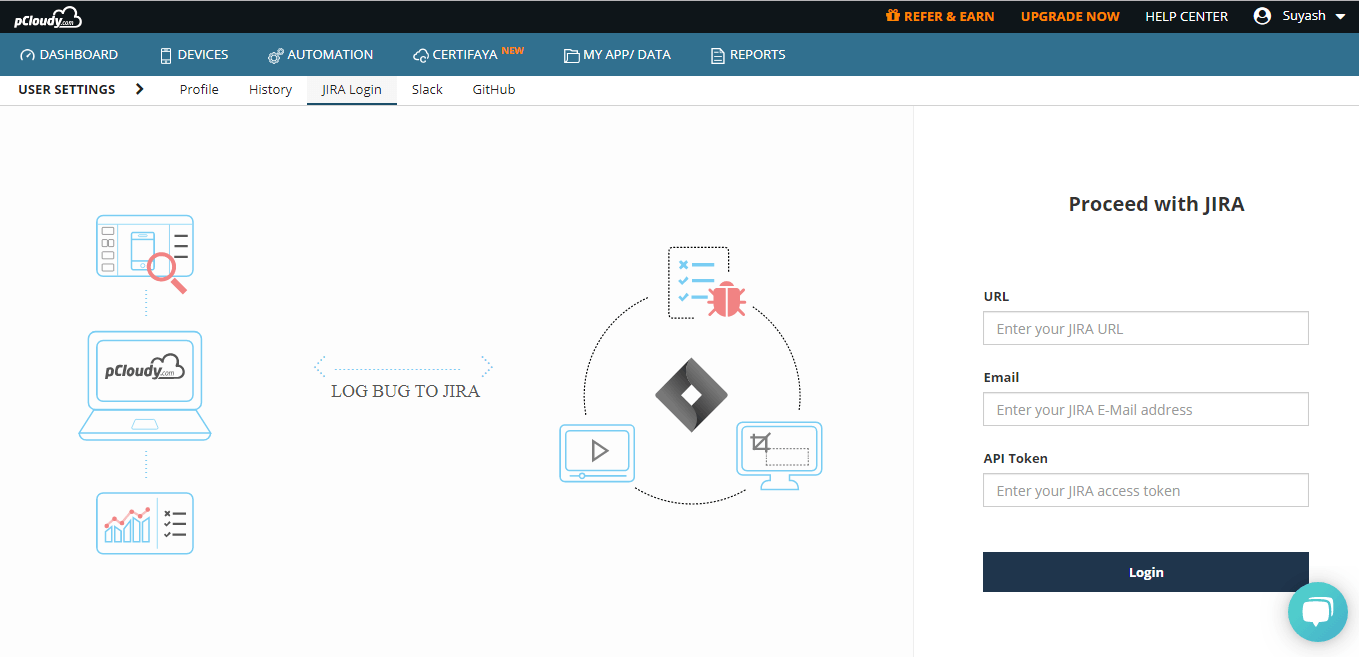
This way you can maintain a separate bug log to share with the team apart from the one in pCloudy. pCloudy also generates reports like Jira and those reports can be shared across your team.
Jira supports both Kanban and Scrum agile methodologies. As a matter of fact, scrum is much more popular these days as it gives the project team to plan their work in detail prior to starting the project. When the scrum board is created, a list of items is added and then sprints and versions are created to move the issues from backlogs to sprints. With Kanban, users can start without having a detailed plan and in these issues can be created but that cannot be moved to sprints as we do in the scrum.
Conclusion
There are many uses of Jira in mobile app testing. It’s not just about handling issues or creating workflows, Jira project management is helping the world’s most known brands in the world. If you understand the Jira bug life cycle and follow the Jira bug tracking best practices, it becomes much easier to scale up your testing efforts. Jira bug tracking, when combined with pCloudy, can save your time and resources.







